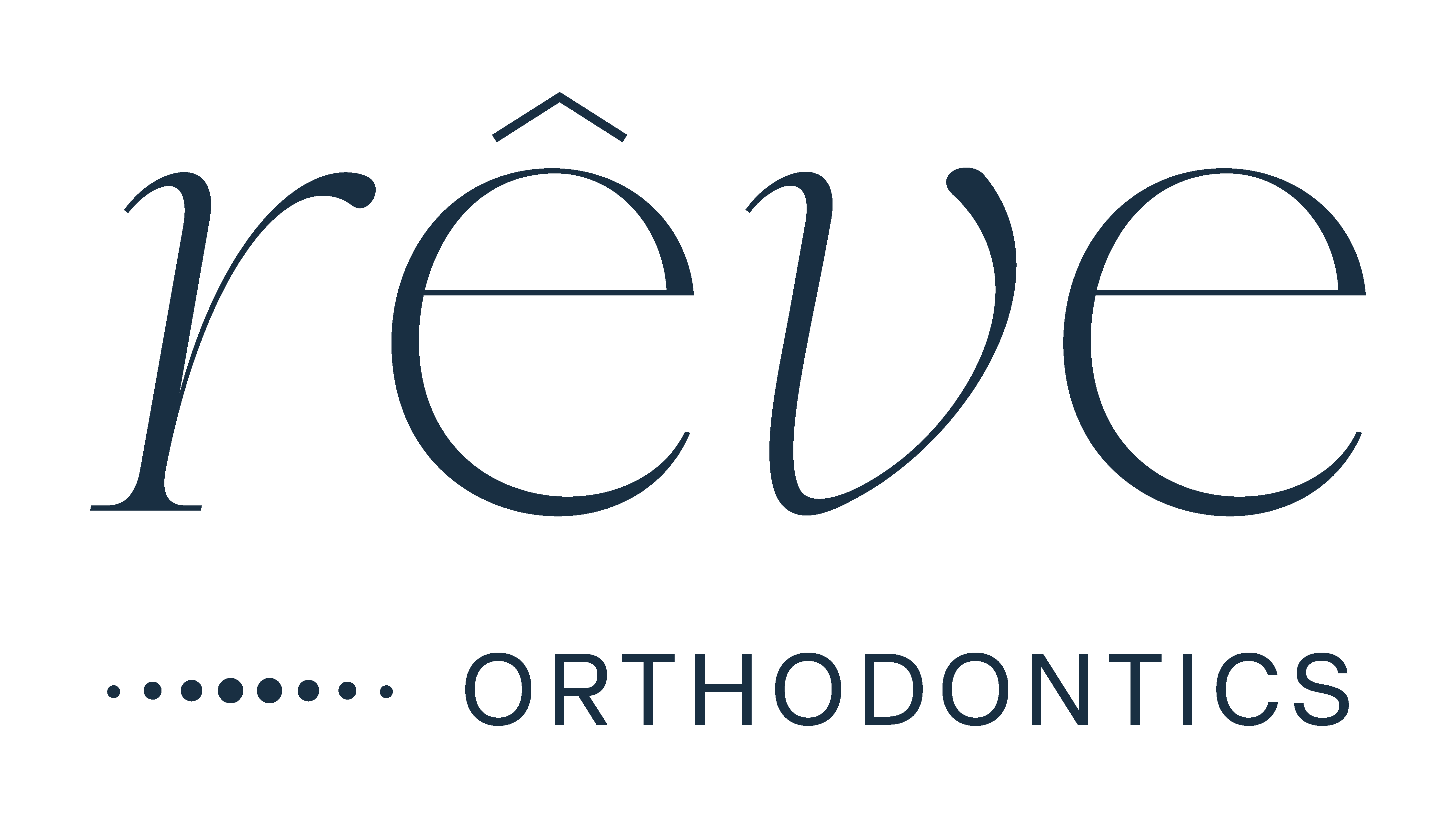About 1 time per week, Dr. Meagan Sturm meets a lovely new patient who is currently undergoing orthodontic treatment with an “over the counter” aligner company. They come to Rêve Orthodontics in Snellville or Midtown, Atlanta for straight teeth because treatment is not going well. They are not seeing the results they were hoping to accomplish. They have spent a lot of their time undergoing treatment AND they spent quite a bit of their money. In truth, our hearts break for these patients. These patients were not well informed about risks or complications related to their treatment, sometimes they have never had a proper head and neck or dental exam, and they feel silly for not knowing what they don’t know. Here is what Dr. Sturm wants every patient to know:
“Be a well-informed consumer”
Aside from all the wire bending, treatment planning, and cheerleading all patients receive through treatment, Dr. Sturm’s job is to teach her patients. She takes this particular role quite seriously. She wants each new patient that comes into Rêve Orthodontics to understand their teeth – to understand WHY their teeth are the way that they are prior to treatment (the etiology of the problem) and to understand HOW they can fix them along with any limitations they may face along the way. Dr. Sturm’s experience and knowledge helps her to inform patients of any hiccups or bumps they may face along their journey to straight, functional, and beautiful teeth.
She wants each patient to know, before they ever begin with moving teeth around, what they will be expecting along the way. Dr. Sturm often tells people during their consultation appointment, “you’re on a fact-finding mission. Right now, you just need to gather information so you can make a well-informed decision about treatment.”
This step of fact-finding and learning is often missing from at-home aligner companies. Often a technician does a scan of your teeth at their store, or you take an impression at home and you are presented with a computer model of how your teeth will look once you have finished your trays. Let us make this REALLY clear – We can give anyone a simulated computer cartoon of straight teeth in the right position because IT’S A COMPUTER-GENERATED CARTOON. These models often do not reflect the reality of what can be accomplished. Patients get excited seeing the prospect of their perfect teeth, but sometimes straight teeth will actually cause a problem for people that do not have perfect symmetry of their jaws. Who has perfect facial symmetry? – about ZERO percent of the world’s population. Please see the cases below to see how straight teeth can cause problems for people whose jaws do not line up.
“You need a dental exam”
Intraoral and extraoral exams are critical to successful orthodontic treatment. We identify growth problems, tooth problems, gum problems, etc. Exams inform our treatment plans so that we can provide the best outcome, the most efficient treatment, and the easiest form of treatment whether it be traditional metal braces, clear braces, clear teeth aligners or other forms of orthodontic treatment. The most common problems we see with patients of cheap invisible teeth aligner companies:
- “my teeth are not moving”. This is most frequently a complaint of patients who have not had a cleaning in advance of their at-home orthodontic treatment. If enough tarter buildup occurs between the teeth, it can prevent the trays from getting a good grip on the teeth. Also, buildup between teeth can affix them together. Teeth that have calcified plaque in between them can have so much friction that it makes it difficult for the teeth to slide past each other.
- None of my teeth hurt prior to treatment, but now I have a tooth that has an infection. Please imagine a tooth that has a non-symptomatic problem (An infected tooth that has not yet caused pain). An inflammatory process has begun on this infected tooth. Now imagine that we go to move this tooth – we stir up additional inflammation, we surprise the nerve of the tooth by attempting to move the tooth. Sometimes in orthodontic treatment, dormant infections in teeth can become active. Therefore,
proper X-rays and observation with a general dentist are critical to the health of your teeth. - “I did not have recession prior to treatment and now I have a recession.” Everyone has different sizes to their jawbones. Some people have big bones, and some people have small bones. Similarly, some people have big teeth, and some people have small teeth. Sometimes, when someone has small bones and big teeth, there is not enough bone to support the tooth structure. We can get teeth straight by moving them but, in getting them straight, big teeth can move out of the bone when there isn’t enough bone structure to support them. Orthodontists keep this in mind when treatment planning cases to deliver the best results in each case.
“My sincere hope is that you have a smile that makes you want to RISE- SHINE-SMILE!”
Dr. Sturm wants every patient she meets to achieve their best results – she wants everyone to LOVE their smile. RISE-SHINE-SMILE to us, means habitually showing off your smile! Having a smile you love is something that should be accessible and attainable for anyone. Rêve Orthodontics Atlanta Orthodontics is here to help you on your journey to LOVING yourself and LOVING your smile.
Case Reviews:
1) History: 30-year-old male patient presents with chief complaint: “I can’t chew food.” The patient was eight months into treatment with an over-the-counter aligner company.
- First, these pictures are taken with the patient biting down (Do you see any teeth touching?). He only has contact on his wisdom teeth. Second, it’s a significant functional problem if a patient can only contact on two spots in their mouth. (Let us say that again for the people in the back: IT’S A PRETTY HUGE PROBLEM THAT THE PATIENT CAN ONLY FUNCTION ON 2 SPOTS IN HIS MOUTH!)
- Imagine trying to bite into a hamburger… His teeth cannot bite into and rip a hamburger. Imagine trying to eat a steak… He can only grind that tough meat on two spots in his mouth. Typically grinding is diffused amongst all the back teeth – usually somewhere between 16 and 20 teeth (depending on wisdom teeth). Having only two spots of tooth contact will put more strain on his chewing muscles AND will be destructive to the teeth that are actually in contact. Usually, that force is distributed by eight to 10x the amount of tooth structure.
- How did this happen? The mail-in aligners did not cover his wisdom teeth and the patient was extremely compliant with treatment. Teeth experience a natural eruptive process (fancy words for: teeth like to touch a partner). When a patient is wearing top and bottom aligners, a portion of the aligner HAS TO COVER EVERY TOOTH IN THE MOUTH. The aligners have a certain thickness- this is typically around one millimeter. When teeth are not covered by the aligner, you have teeth that are not touching. Remember: teeth like to touch a partner! So, the teeth not covered by the aligner will start to move so that they can touch their partner. Upper teeth will come down, lower teeth will come up so that they can meet their partner. Because of the way our
jaw’s function, a one-millimeter premature contact in the back causes a three-millimeter separation of the front teeth. And that, folks, is how someone without orthodontic training can turn a simple case into a difficult case. - Personally, we feel sad for our patient. He sought at-home orthodontic treatment to improve himself. He was not informed well enough about teeth
(not his fault). - This patient is in the middle of treatment with traditional metal, adult braces. All wisdom teeth were removed in advance of his treatment
2) History: 28-year-old male patient presents with chief complaint: “My bite is not correct.” The patient was one year into treatment with a highly advertised and very popular “over the counter” aligner company.
- This patient was incredibly compliant with his clear aligners. This is evident because his teeth are straight. Very very very straight.
- This patient has had asymmetrical growth. He has grown more on the bottom jaw than on the top jaw AND he has grown more on the left side than he has on the right side. His back teeth fit together more like columns, rather than puzzle pieces like they are supposed to. His upper and lower teeth hit right on top of each other. Leaving the front teeth in this position would increase chipping on the upper and lower front teeth AND cause mobility on the upper and lower teeth throughout the course of his lifetime.
- This patient was treated with a combination of upper and lower InBrace and rubber bands.
3) History: 53-year-old female patient presents with the chief complaint: “My teeth are not straight.” The patient was two years into treatment with a highly advertised and very popular “over the counter” clear aligner company.
- I know what you’re thinking looking at these pictures, “This lady has pretty teeth.” AND she absolutely does! BUT – this patient has invested two years of her time, lots of her money AND still does not have straight teeth. Several of her lower back teeth are turned 90 degrees. She has crossbites – her upper teeth fit within her lower teeth (upper teeth are designed to be on the outside of lower teeth like the lid of a jar overlapping the lip it screws into). She has a deep vertical overbite – upper teeth overlap lower teeth too much. When this occurs, the patient will experience wear and chipping on her lower front teeth progressively throughout the course of her lifetime unless it’s corrected. The photographs show the chips on her lower front teeth.
- This patient was treated with a combination of clear aligners and porcelain brackets. Brackets were placed for a short period of time to quickly reduce
the 90-degree rotations on the patient’s lower teeth and the patient was treated with Invisalign Aligners.
Visit Our Office
Snellville, GA
2371 Henry Clower Blvd SW, Ste A, Snellville, GA 30078
Email: info@reveortho.com
Book NowOffice Hours
Visit Our Office
Office Hours
- MON - THU8:00 am - 4:00 pm
- FRI8:30 am - 1:00 pm
- SAT - SUNClosed








